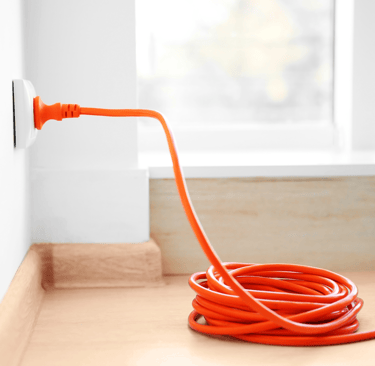Let's Talk Electrical Cords: A Home Inspector's Guide
As a home inspector, one of the crucial aspects of ensuring the safety and functionality of a home is examining its electrical systems. Among the many components that require attention, electrical cords often play a pivotal role. These cords, ubiquitous in our daily lives, power our devices. However, their condition and usage are critical factors that can impact safety and efficiency within a home.


As a home inspector, one of the crucial aspects of ensuring the safety and functionality of a home is examining its electrical systems. Among the many components that require attention, electrical cords often play a pivotal role. These cords, ubiquitous in our daily lives, power our devices. However, their condition and usage are critical factors that can impact safety and efficiency within a home.
Choosing the Right Electrical Cord
Selecting the appropriate electrical cord for different applications can enhance safety and efficiency. Here are some factors to consider:
Length and Gauge: The length and gauge (thickness) of the cord determine its capacity to carry current without overheating. For longer distances or higher power requirements, choose a cord with a lower gauge number (thicker wire).
Indoor vs. Outdoor Use: Outdoor cords are designed to withstand weather conditions and should be used for outdoor appliances and tools. Indoor cords are not suitable for outdoor use due to their lack of weatherproofing.
Power Rating: Check the cord's power rating (in watts or amps) to ensure it matches the requirements of the device or appliance you intend to power.
Quality: When it comes to electrical cords, you get what you pay for. Choose a high-quality electrical cord from a trusted brand.
Proper Use of Electrical Cords
It's important to emphasize that electrical cords are intended for temporary use. They should never replace permanent wiring within a home. Using extension cords or power strips as a permanent solution can overload circuits and substantially increase the risk of electrical fires.
When to Replace Electrical Cords
Electrical cords are not designed to last forever. Over time, wear and tear can compromise their insulation and electrical integrity, potentially leading to hazards such as shocks, sparks, or fires. Here are some signs that indicate it's time to replace an electrical cord:
Visible Damage: Look for cuts, nicks, or fraying along the length of the cord. Exposed wires are a serious hazard and should be addressed immediately.
Heat Buildup: If a cord feels excessively warm during use, it could indicate internal damage or overloading, both of which warrant replacement.
Age: As a general rule, electrical cords should be inspected regularly, especially if they are older or have been used extensively.
Safety Tips for Using Electrical Cords
Inspect Regularly: Check cords for damage before each use and replace any that show signs of wear.
Unplug When Not in Use: Avoid leaving cords plugged in when not in use to prevent overheating and reduce the risk of electrical hazards.
Avoid Overloading: Do not plug multiple high-power devices into a single extension cord or power strip. Use them only for their intended capacity.
While electrical cords are convenient and essential for powering our devices, their proper use and maintenance are critical for home safety. Ensuring that homeowners understand the importance of replacing old or damaged cords and using them correctly can help prevent electrical accidents and ensure the longevity of their electrical systems. By following these guidelines, you can enjoy a safer and more efficient electrical setup in your home.